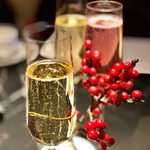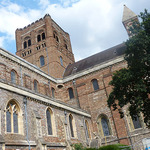Happy National Tea Day! Today, I visited Chiswick House & Gardens where Fes-tea-val was taking place for this weekend only. Fes-tea-val is a celebration of tea, Britain's favourite drink. I love tea and afternoon tea, so I planned my visit. I will cover my time at Fes-tea-val in another post, but for now I will cover one of the attractions at Fes-tea-val, the Chitra Collection at Chiswick House.

First on my list was my visit to the Chitra Collection at Chiswick House. The Chitra Collection is a collection of historically-significant and beautifully-crafted tea-related items (pots, spoons, bowls, sets) from Asia, Europe, and the Americas. A few significant pieces of this collection were brought to Chiswick House and put on show for National Tea Day 2018. In essence, this was a very brief historical look at tea and how tea came to be drunk in ceremonies, then by the richest of the population, and now by the general public through developments in transport to make it widely-available. The Newby company owns the collection and wants to ensure that future generations and appreciate tea.

Tea's history begun in China around 5000 years ago and soon spread to Japan where it was a favourite of the emperor and Buddist monks used it in religious ceremonies. One of the styles of tea consumed in early China was frothed, but in 1300, loose tea was brewed and favoured by Chinese. Above shows a tea bowl that was used for frothed tea and a red clay teapot from the early 1600s.

After the populatority of tea in Asia, tea was introduced to Europe during the early 1600s and imported. As tea was expensive to import and took a voyage by sea, it was only affordable to and drunk by the richest people.

Tea and tea-related goods were shipped on boats, but not all boats made it back safely. The top left item was a teapot discovered in a Portuguese shipwreck, and the bottom of it has the remains of barnacles. The bottom photograph shows a matching teabowl and saucer. The left side of above image shows a teapot embellished with metal to add European fashion to the Asian artwork, and the metal embellishments also hid any breakages that may have happened in transit. (This image is also at the top of the article.) The last item is the ellaborate Dutch blue Delft made of ceramic with a blue and white design inspired by Chinese porcelain.

Tea became fashionable in England in the mid-1600s, and by the 1700s, it was a staple social activity. Silver teapots were in fashion. The item at the back in the photograph below was heated from below for a short time. The gold boxes are tea canisters with locks to prevent tea from being stolen. The small teapot on the left belonged to Lord Admiral Nelson. It was big enough to make tea for one person, so I assume that at this time in the early 1800s that tea was consumed for personal outside of social situations.

Tea became wider-used in the 1800s as it became cheaper to import. The national drink of Great Britain became tea during this time, and the East India Company started to import tea from India. Below shows images of items from this time including teapots, tea caddies, and spoons, including a teapot made of caneware (bamboo). Also important to note is the teaette, which is a spoon that is filled with loose leaf tea and brewed into a cup to create a cup for one person.


Next is a collection of German-made teaware. Germany was one of the top European teaware producers. Germans were able to create and produce porcelain that was as good as the Chinese and Japanese counterparts. As a result, the German teaware became popular. The Germans even decorated their pottery with Asian designs. The below are Meissen teaware examples.


In France, tea was a popular drink but expensive, so it could only be afforded by the very rich. In France, tea was served with milk, and girls had to learn to serve tea and had their own little tea sets. The silver teapot with the goose on the back right is identical to one that Napoleon owned.

In Russia, tea is also very popular due to the cold climate and is one of the national drinks. Tea is sweetened with sugar, jam, honey, or lemon. The collection in the photographs below is of a tea caddy made by Faberge.

Last (but not least), is a sample of silver teapots from America. Tea was brought by early settlers from Europe and quite popular until the British tax on tea. The teapot on the left below was owned by one of the people who was against the tea tax and assisted in the Boston Tea Party. Coffee became a more important drink and was grown closer to home (Caribbean and South America). The tea set below on the right with the green tops was made by Tiffany & Co.

To see the Chitra Collection at Chiswick House or to attend the events and buy tea and tea-related items, you still have a chance to visit Fes-te-val at Chiswick House and Gardens tomorrow.



Leave a comment